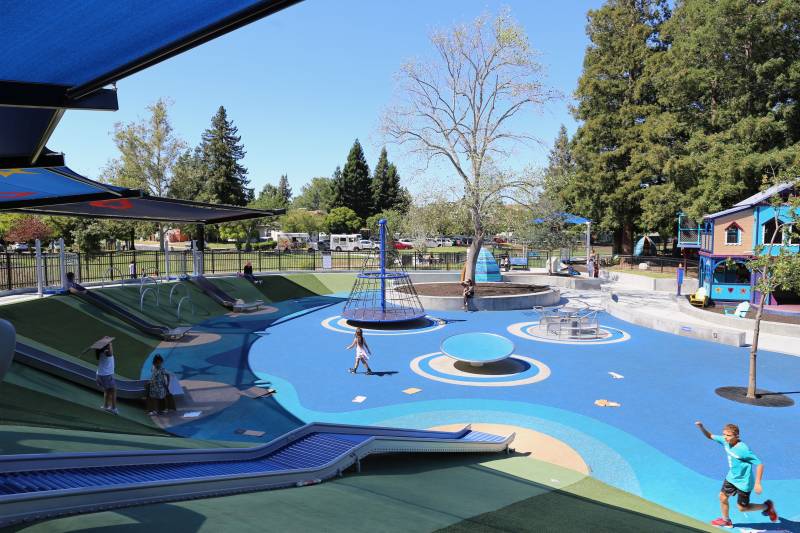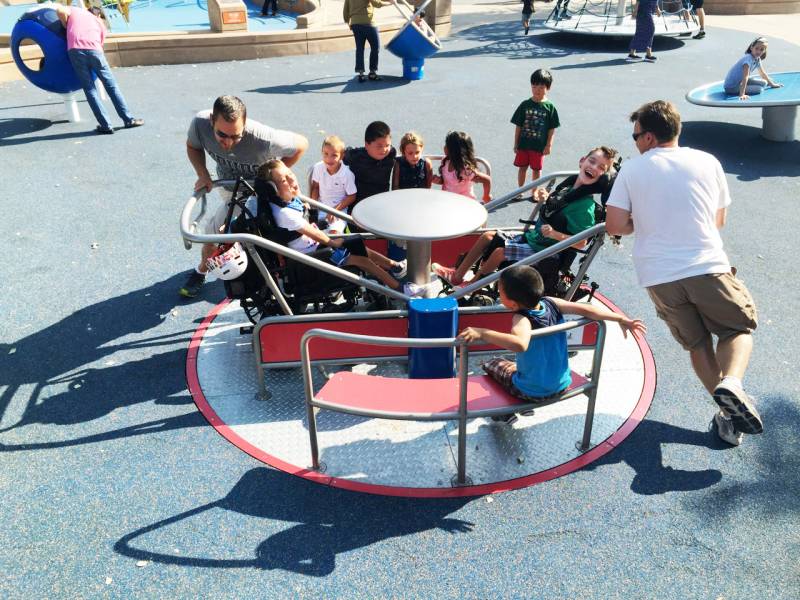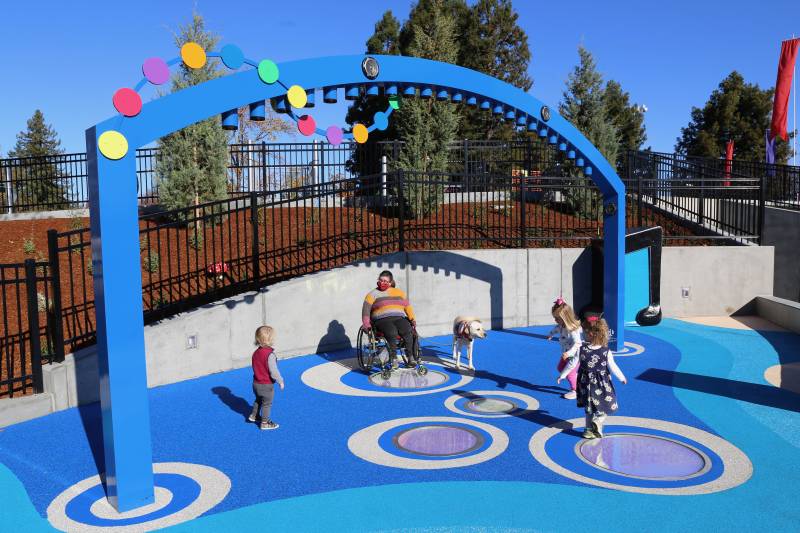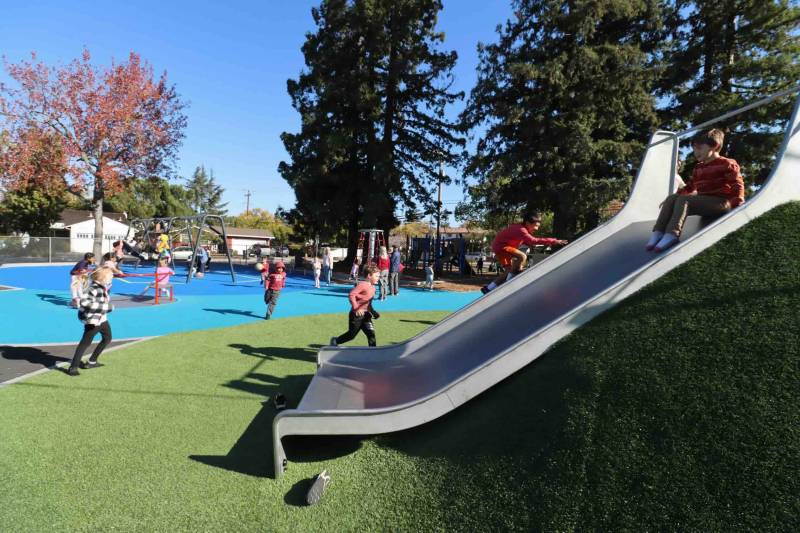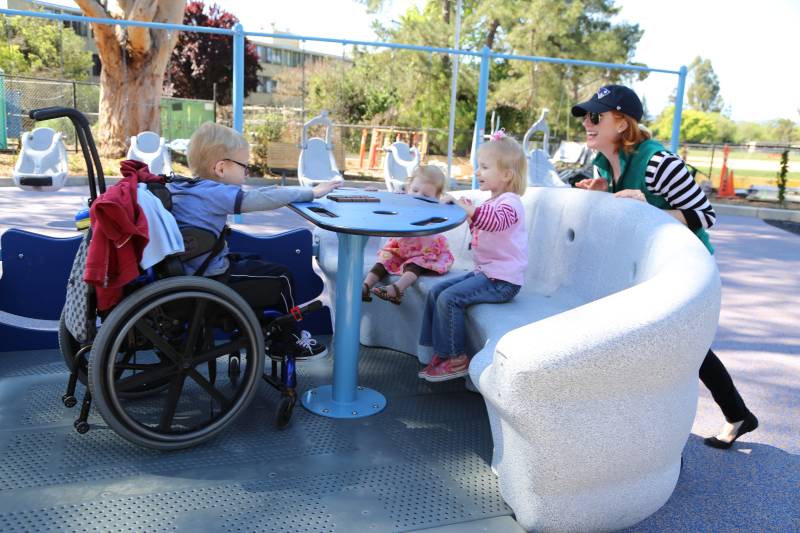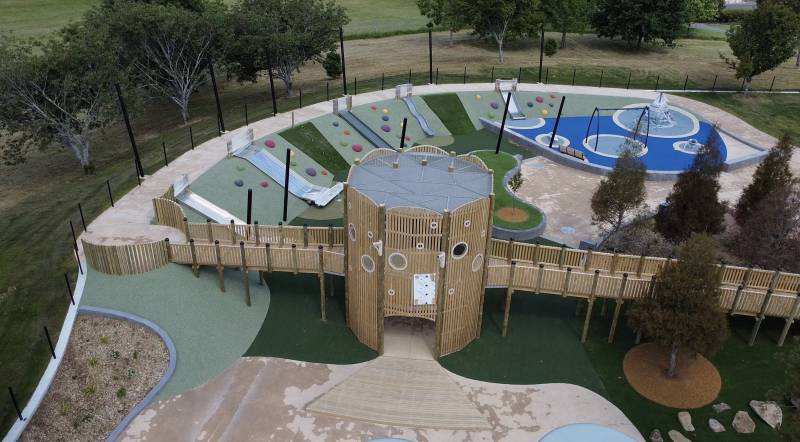When Natalie Mackay toured her son’s elementary school, she asked how he might be included on the playground. The school suggested that her son, who used a wheelchair, could lay down a blanket on a graveled area to play. This kind of “solution,” in which children with disabilities are left to watch other children play in schools, tells all students that excluding some peers is OK, said Mackay. As a mom, she wanted to see her son and all children have exciting opportunities for play and socialization. So she founded Unlimited Play, a nonprofit dedicated to accessible and inclusive playground design. Inclusive playgrounds “were the vehicle that I thought would allow kids to get to know my son,” she said.
Playgrounds are a child’s “first outdoor classroom,” and where “they learn they belong to the community,” said Olenka Villarreal, CEO and founder of Magical Bridge Foundation, a nonprofit dedicated to universal, community and inclusive design. Playgrounds set the foundation for belonging and social inclusion for kids and adults of all abilities. But according to both Mackay and Villareal, accessibility standards for playgrounds laid out by the Americans with Disabilities Act (ADA) alone don’t encompass the specificities and expansiveness needed to create true inclusion on the playground. Mackay and Villarreal have made it their mission to redefine what it means for a playground to be truly accessible and inclusive of the full spectrum of ability and disability in the communities that the playgrounds serve. To them, playgrounds that are inclusive to all types of play can help to create a sense of belonging for everyone.
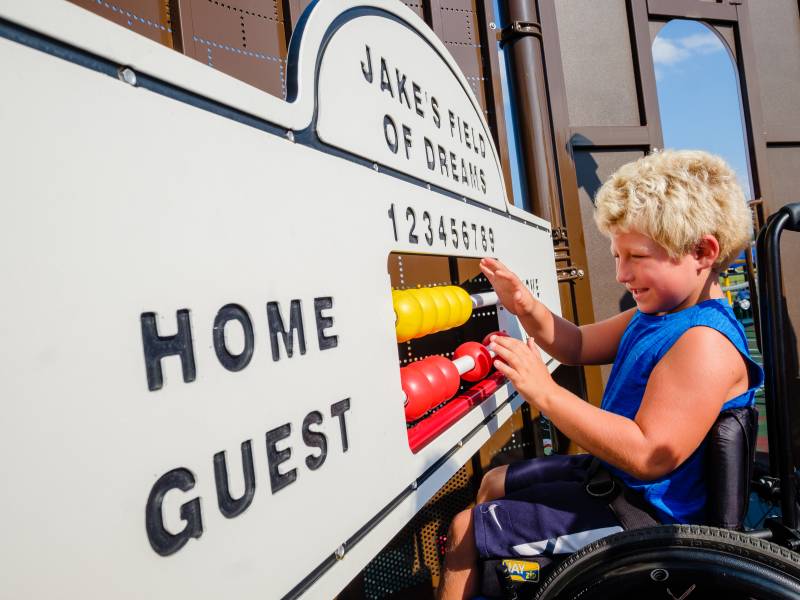
What does full accessibility look like?
For Villarreal, Magical Bridge Foundation was born organically to meet her own family’s needs. “I had one daughter with disabilities and one without, and I was looking for a place to take them both,” she said. Villarreal also acknowledged that abilities may change over time. “I want to be included in the body I live in today and the one I’m going to live in in 30 years,” she said. “When our spaces aren’t welcoming to us in whatever way we show up, it really creates divisions among everyone.”
According to Mackay, accessibility on playgrounds means removing barriers to play. She said that one of the first suggestions from parents that influenced her understanding of inclusion was to include fencing around play spaces for the safety of children who might elope. Inclusivity on the playground doesn’t begin and end with ramp access to the lower level of a structure or accessible pathways to a gated entrance. There are many more abilities to consider, like vision and hearing loss, sensory needs, and mobility and physical support needs. Social inclusion is also a big part of accessibility on a playground, said Mackay.


